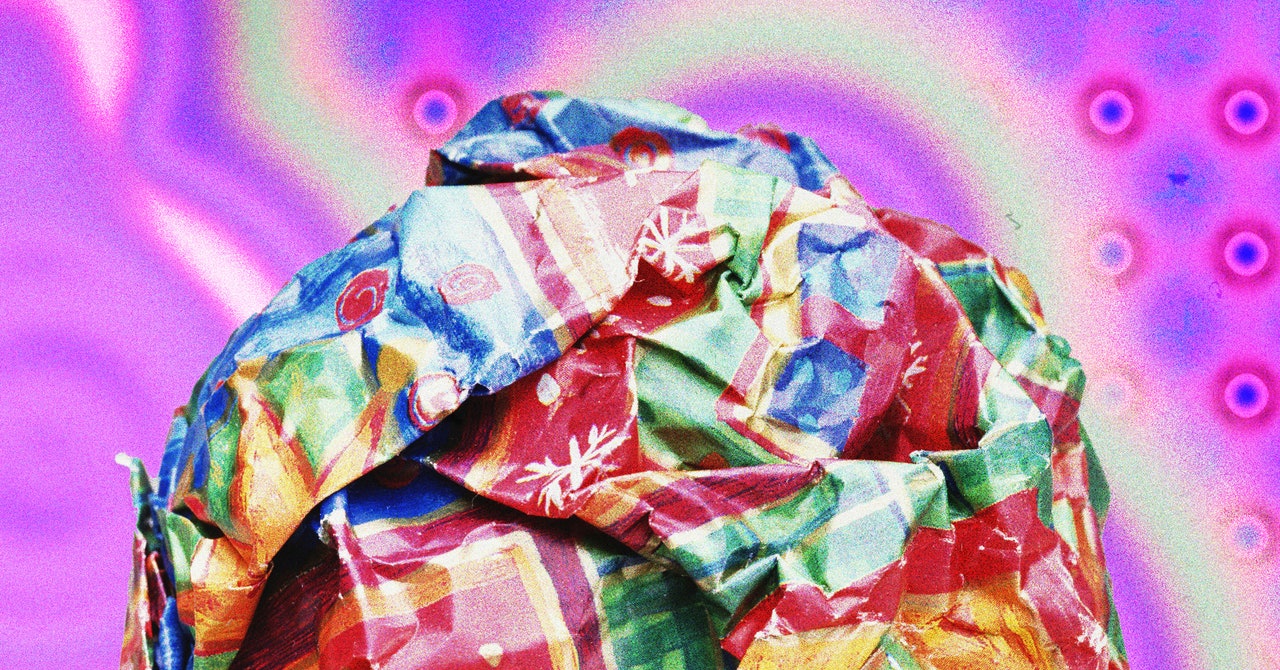For example, instead of a ribbon, use compostable twine or string with a cutting — a sprig of holly, a clipping of eucalyptus, or a cedar branch — strung into it. This is a rustic look that will last even if you wrap things up beforehand. Alternatively, add something less rigid like flowers or berries just before giving the gift.
Don't forget the tape!
The last thing you want to do is make all these adjustments and ruin it using standard plastic tape that can't be recycled. Sellotape now offers a plastic free version Of its famous tape, which is 100 percent plant-based and completely compostable. Alternatively, consider paper-based options like washi tape. They also often come in beautiful patterns, which can help make even plain brown paper attractive.
Send fewer cards—or go digital
If your family is big on holiday cards, it may be a hard habit to break, but approximately 2.65 billion Christmas cards are sold in the U.S. each year, and sending one less card would save 50,000 cubic yards of paper, according to. Stanford University,
It helps that there are now great digital options that can be sent to friends and family via email, eliminating waste altogether – and can be sent at the last minute when it's too expensive to mail anything. It's late. Make an extra effort to discuss beforehand with your loved ones about going the all-digital route for a better environmental win.
If you can't afford to break family tradition, be sure to select your cards with the same care you select your wrapping paper. Avoid glitter and foil and look for cards that are labeled as recyclable. Even better—look for ones that are made from post-consumer recycled materials. You can also buy cards that have seeds on them and be imposed,
Of course, only you have control over the cards you send. If you find some cards that aren't recyclable, consider keeping them and cutting them up so that the parts with holiday symbols can be reused as gift labels for next year.
Choose a real Christmas tree if you have one
It may seem counterintuitive, but even though real trees are only used once before being thrown away, they still produce less waste than their artificial counterparts. This is because a real tree can be completely recycled if disposed of properly, and can be used for things like firewood, wood chips or compost.
On the other hand, fake trees are made of materials that cannot be recycled and end up in landfills long after the time of spreading Christmas cheer is over. Carbon Trust Estimates are that you would need to reuse an artificial tree seven to 20 times (depending on size) to offset the carbon footprint generated by manufacturing, packaging and shipping it. When you buy that real tree (if you haven't already) make sure you buy something locally grown, which is a more sustainable option because it doesn't have to be shipped as far.
Go DIY on Decoration
The same rules apply when decorating your tree and your home. Plastic and foil are prohibited, and being creative is the best way to reduce waste. For great DIY ideas, I'd refer you to YouTube, which is filled with DIY holiday decor tutorials: paper garland, Hanging Paper Dreidels, salt dough jewelryA DIY Kwanzaa EdgingGets more points. These decorations may not stand the test of time in storage, but they will be fully recyclable and compostable after the holidays are over, meaning you can consciously change your color theme each year. .
Store-bought holiday crackers—cardboard tubes that you pull at both ends to open—should be avoided. They traditionally use shiny and glittery materials, which makes them non-recyclable, just like cards and wrapping paper. And that's before you consider those horrible, often plastic gifts that will usually end up in the trash almost immediately.


